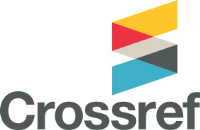Mastering the basic skills of insurance, movement and positioning – the key to successful physical therapy (analytical review of scientific information sources)
DOI:
https://doi.org/10.32782/2077-6594/2025.1/20Keywords:
insurance, movement, positioning, physical therapy, rehabilitationAbstract
Mastery of basic securing, moving, and positioning skills is driven by current challenges in healthcare and rehabilitation, including the growing number of patients with injuries and illnesses, patient safety, physical therapy effectiveness, professional training, and innovations in physical therapy. Purpose: To form a holistic view of the physical therapy methodology aimed at using aids to master the skills of moving, securing and positioning patients. Materials and Methods. A bibliosystematic review of scientific information sources was carried out using Internet search databases. The methods of the study were content analysis, structural and logical analysis. Results. Mastering the basic skills of insurance, movement and positioning is an integral part of physical therapy, which is critical for the recovery of patients after injuries, surgeries or congenital defects of the musculoskeletal system. These skills not only ensure safety during therapeutic procedures, but also contribute to the effectiveness of rehabilitation, making it easier for patients to adapt to new living conditions. Successful implementation of these skills training requires an individual approach, taking into account the patient’s physical condition, psychological characteristics and motivation. Thus, the development of insurance, movement, and positioning skills becomes a key step in providing quality physical therapy, which leads to an improvement in the quality of life of patients and their independence. Positioning is one of the most important elements of successful physical therapy. Correct body positioning during rehabilitation not only helps to achieve effective results, but also prevents possible complications such as pain, contractures, or skin damage. Mastering the skills of insurance, movement and positioning is a critical element of physical therapy, which significantly increases the quality of recovery and improves patient independence. Conclusions. It has been established that the correct choice and use of mobility aids, such as canes and crutches, not only ensures the patient's safety during rehabilitation, but also prevents possible complications.
References
Гузак О. Фізична реабілітація на різних етапах відновлення здоров’я та функціонування після ампутацій кінцівок у військовослужбовців [Інтернет]. Доступно: https://dspace.uzhnu.edu.ua/jspui/handle/lib/55893
Міністерство освіти і науки України. [Інтернет]. Доступно: https://mon.gov.ua/static-objects/mon/uploads/public/675/c13/b6d/675c13b6d2299456216025.pdf
Грейда НБ. Позиціонування пацієнта у фізичній терапії та ерготерапії: методичні рекомендації для самостійної роботи. Луцьк; 2024. 41 с.
Практичні навички фізичного терапевта: дидактичні матеріали / Т. Бакалюк, С. Барабаш, В. Бондарчук та ін. Київ; 2022. 164 с.
Андрійчук ОЯ. Основи практичної діяльності у фізичній терапії та ерготерапії: навчально-методичний посібник. Луцьк: ПП «Волинська друкарня»; 2022. 264 с.
Кабінет Міністрів України. Постанова від 5 квітня 2012 р. № 321. Про затвердження Порядку забезпечення технічними та іншими засобами реабілітації осіб з інвалідністю, дітей з інвалідністю та інших окремих категорій населення і виплати грошової компенсації вартості за самостійно придбані технічні та інші засоби реабілітації, їх переліку [Інтернет]. Редакція постанови від 12 квітня 2022 р. № 454. Доступно: https://zakon.rada.gov.ua/laws/show/321-2012-%D0%BF#Text
Попович ДВ, Бондарчук ВІ, Миндзів КВ, Гевко УП. Особливості застосування технічних засобів реабілітації у навчальному процесі здобувачів вищої освіти спеціальності 227 «Фізична терапія, ерготерапія». Медична освіта. 2023;(2):57–62.
De Witte L, Steel E, Gupta S, et al. Assistive technology provision: towards an international framework for assuring availability and accessibility of affordable high-quality assistive technology. Disability and Rehabilitation: Assistive Technology. 2018;13(5):467–472.
Oldfrey B, Barbareschi G, Morjaria P, et al. Could assistive technology provision models help pave the way for more environmentally sustainable models of product design, manufacture and service in a post-COVID world? Sustainability. 2021;13(19):10867.
MacLachlan M, Scherer MJ. Systems thinking for assistive technology: a commentary on the GREAT summit. Disability and Rehabilitation: Assistive Technology. 2018;13(5):492–496.
WHO. Definition of Assistive Technology [Internet]. Available from: http://www.who.int/disabilities/technology/en/.
Сікорська МВ, Візір ІВ, Дарій ВІ. Клінічна практика з фізичної терапії при травмах і захворюваннях нервової системи: навчально-методичний посібник для здобувачів першого (бакалаврського) рівня вищої освіти спеціальності 227 «Фізична терапія, ерготерапія». Запоріжжя: ЗДМУ; 2023. 167 с..
Бармашина Л. Формування середовища життєдіяльності для маломобільних груп населення. Київ: Союз-Реклама; 2000. 89 с.
Основи реабілітації, фізичної терапії, ерготерапії: підручник / Вакуленко ЛО, Клапчук ВВ, Вакуленко ДВ, та ін.; за заг. ред. Вакуленко ЛО, Клапчука ВВ. Тернопіль: ТНМУ; 2020. 372 с.
Цапенко ВВ, Терещенко МФ. Метод дослідження біомеханічних параметрів стопи людини. Вчені записки Таврійського національного університету імені В.І. Вернадського. Серія: Технічні науки. 2018;29:51–59.
Цапенко В, Терещенко М. Критерії опорних характеристик стопи людини. Bull. Kyiv Polytech. Inst. Ser. Instrum. Mak. 2022;63(1):89–99. DOI: 10.20535/1970.63(1).2022.260655.
Mitutsova L, Delchev K, Vitkov V, Chavdarov I, Yaroshevsky V, Serbenjuk N, Nikitin O. Biomechanical system for scientific-experimental study of the regeneration of the spinal cord locomotion capabilities after traumatic break. In: Proceedings of the International Conference «PRAKTRO 2007»; 2007 Jun 12-15; Varna, Bulgaria.
Герасименко ОС, Закаляк НР. Вплив фізичної реабілітації на якість життя осіб з наслідками ампутації нижньої кінцівки. Науковий часопис Національного педагогічного університету імені М. П. Драгоманова. Серія 15: Науково-педагогічні проблеми фізичної культури (фізична культура і спорт). 2019; Вип. 5(113): 26–30. Доступно за адресою: http://enpuir.npu.edu.ua/handle/123456789/25503
Martins M, Santos C, Frizera A, Ceres R. A review of the functionalities of smart walkers. Med Eng Phys. 2015 Oct;37(10):917-28. doi: 10.1016/j.medengphy.2015.07.006. Epub 2015 Aug 22. PMID: 26307456.
Rasouli F, Reed KB. Walking assistance using crutches: A state of the art review. J Biomech. 2020 Jan 2;98:109489. doi: 10.1016/j.jbiomech.2019.109489. Epub 2019 Nov 14. PMID: 31831139.
Sterke B, Jabeen S, Baines P, Vallery H, Ribbers G, Heijenbrok-Kal M. Direct biomechanical manipulation of human gait stability: A systematic review. PLoS One. 2024 Jul 11;19(7):e0305564. doi: 10.1371/journal.pone.0305564. PMID: 38990959; PMCID: PMC11239080.
Bertrand K, Raymond MH, Miller WC, Martin Ginis KA, Demers L. Walking Aids for Enabling Activity and Participation: A Systematic Review. Am J Phys Med Rehabil. 2017 Dec;96(12):894-903. doi: 10.1097/PHM.0000000000000836. PMID: 29176406.
Edelstein JE. Assistive devices for ambulation. Phys Med Rehabil Clin N Am. 2013 May;24(2):291-303. doi: 10.1016/j.pmr.2012.11.001. Epub 2013 Jan 18. PMID: 23598264.
Simonsen EB. Contributions to the understanding of gait control. Dan Med J. 2014 Apr;61(4):B4823. PMID: 24814597.
Nakakubo S, Doi T, Makizako H, Tsutsumimoto K, Hotta R, Kurita S, Kim M, Suzuki T, Shimada H. Association of walk ratio during normal gait speed and fall in community-dwelling elderly people. Gait Posture. 2018 Oct;66:151-154. doi: 10.1016/j.gaitpost.2018.08.030. Epub 2018 Aug 25. PMID: 30195217.
Allet L, Leemann B, Guyen E, Murphy L, Monnin D, Herrmann FR, Schnider A. Effect of different walking aids on walking capacity of patients with poststroke hemiparesis. Arch Phys Med Rehabil. 2009 Aug;90(8):1408-13. doi: 10.1016/j.apmr.2009.02.010. PMID: 19651276.
Faruqui SR, Jaeblon T. Ambulatory assistive devices in orthopaedics: uses and modifications. J Am Acad Orthop Surg. 2010 Jan;18(1):41-50. doi: 10.5435/00124635-201001000-00006. PMID: 20044491.
Ulkar B, Yavuzer G, Guner R, Ergin S. Energy expenditure of the paraplegic gait: comparison between different walking aids and normal subjects. Int J Rehabil Res. 2003 Sep;26(3):213-7. doi: 10.1097/00004356-200309000-00008. PMID: 14501573.
Karimi MT, Fatoye F. Evaluation of the performance of paraplegic subjects during walking with a new design of reciprocal gait orthosis. Disabil Rehabil Assist Technol. 2016;11(1):72-9. doi: 10.3109/17483107.2014.921247. Epub 2015 Dec 15. PMID: 25069902.
Герцик А. Мета, цілі та завдання фізичної реабілітації: системний підхід. Молодіжний науковий вісник Східноєвропейського національного університету імені Лесі Українки. Фізичне виховання і спорт. 2015; Вип. 20: 121-126.
Анкін МЛ, Петрик ТМ., Голомовзий ОВ. Відновлення гострих пошкоджень ахілового сухожилля з використанням перкутанного шва. Запорожский медицинский журнал. 2010; т. 12, № 4: 132-134. Доступно за адресою: http://nbuv.gov.ua/UJRN/Zmzh_2010_12_4_35.
Желєзний ОД. Фізична реабілітація хворих з наслідками діафізарних переломів кісток гомілок у відновному періоді: автореферат дис. канд. н. з фізичного виховання та спорту – 24.00.03 – фізична реабілітація. Львів; 2011.








